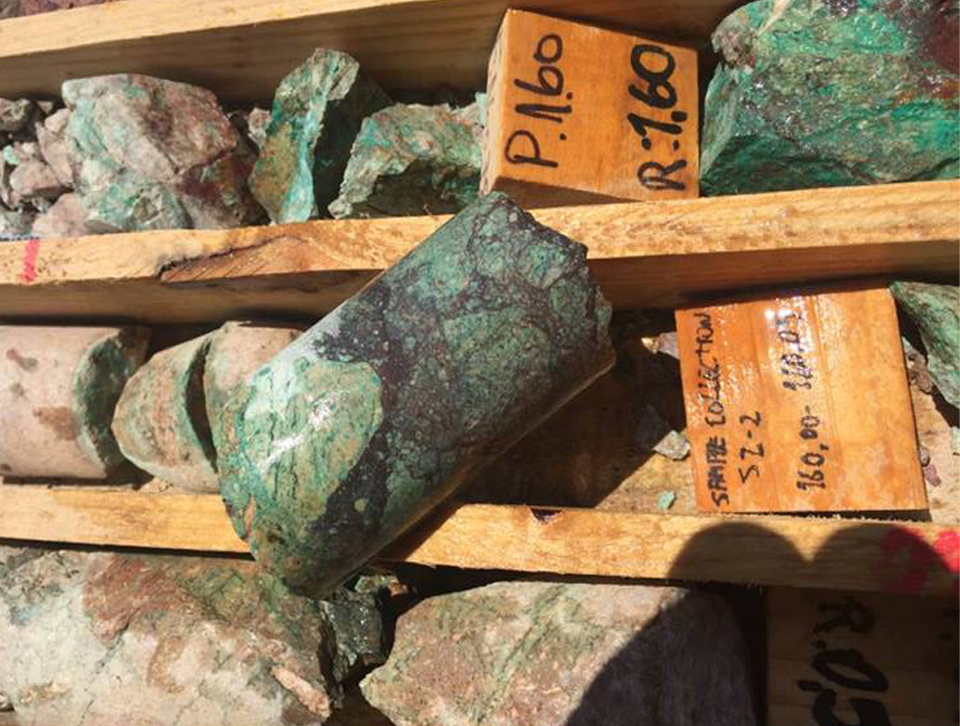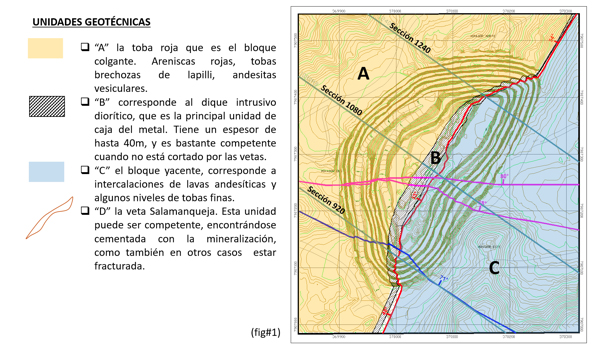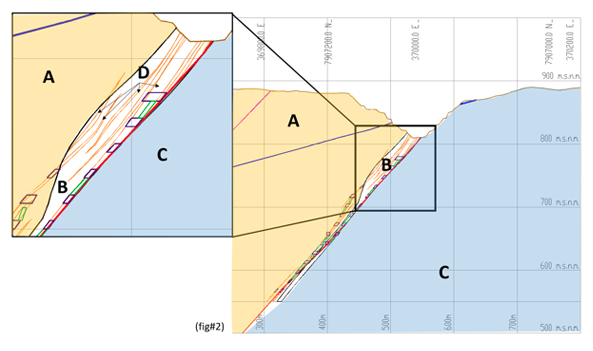The vein of the Salamanqueja mine and the Chacota vein form the two central deposits of the project and are characterized by the presence of oxidized copper minerals throughout the upper part, that is to say the first 240 meters, between the 860 and 620 heights.
In its lower part, the presence of mixed minerals with interesting contents of sulfides appears, which is not contemplated to exploit for now. The Salamanqueja vein is a vein of approximately 4 kilometers in length and the production is focused on the central part that corresponds to 1 kilometer.

Salamanqueja Vein Geology
The geology of the Salamanqueja mine consists of an andesitic to microdioritic dike up to 40 meters thick, which intrudes by a fault of north-east direction and a dip of 55° northwest, which in turn juxtaposes two structural panels: one volcanic to the east and another volcanoclastic to the west.
The mineralization is found on both edges of the dike, but especially towards the base. The first 200 meters correspond to green copper oxides and under this there are
chalcocites with the presence of silver. The mine that has 35,000 meters of drill holes is built on this vein.
GEOTECHNICAL UNITS


The vein of the Salamanqueja mine and the Chacota vein form the two central deposits of the project and are characterized by the presence of oxidized copper minerals throughout the upper part, that is to say the first 240 meters, between the 860 and 620 heights. In its lower part, the presence of mixed minerals with interesting contents of sulfides appears, which is not contemplated to exploit for now. The Salamanqueja vein is a vein of approximately 4 kilometers in length and the production is focused on the central part that corresponds to 1 kilometer.

Salamanqueja Vein Geology
The geology of the Salamanqueja mine consists of an andesitic to microdioritic dike up to 40 meters thick, which intrudes by a fault of north-east direction and a dip of 55° northwest, which in turn juxtaposes two structural panels: one volcanic to the east and another volcanoclastic to the west.
The mineralization is found on both edges of the dike, but especially towards the base. The first 200 meters correspond to green copper oxides and under this there are
chalcocites with the presence of silver. The mine that has 35,000 meters of drill holes is built on this vein.
GEOTECHNICAL UNITS




